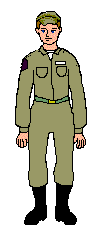PABT
PILOT APTITUDE TEST PILOT APTITUDE TEST
PILOT APTITUDE TEST : The aim of giving this test is generally to find out whether the candidate possesses mental alertness, presence of mind and self confidence and has adequate control over his nerves, and particularly whether he will be able to balance and control the flight of the aircraft and will not break down under stress.
- These tests are designed to measure the ability relevant to the art of flying a plane.
THREE TESTS
Instrument battery test (insb)(written test)
part i – 15 questions in 8/9 minutes
part ii – 60 questions in 15 minutes
on qualifying above, then
* sensory motor apparatus test
* control velocity test
- This test is designed to see whether a candidate has the ability to read meters quickly so as to enable him to adjust his flight with the help of these meter readings.
- The Magnetic Compass – The compass needle always points out to the North. In this the meter reading the needle of the compass shows the bearing of the plane in relation to North. Thus one can find to which direction the plane is moving.
- The Altimeter – In altimeter, the needles move in clockwise direction. By reading the needles in the altimeter, Pilot is able to know the altitude (height) at which the plane is flying at a particular time. Adjustments in the plan’s altitude are made with the help of the altimeter. The accuracy of the altimeter in the plane is very important for its safe flying.
- Air Speed Indicator or Speedometer – The needle in this also moves in clockwise position. By reading the needle, the Pilot can find out the speed of the aircraft per hour. He, therefore, can make adjustments where necessary.
- Turn Indicator – From TI, the Pilot can find out whether the aircraft is turning left or right. If the plane is turning left, in the instrument the black ball remain in the centre and the white needle will move to the right and if the plane is turning right the black ball will remain in the centre and the white needle will move to the left. It means the white needle will invariably move to the direction opposite to which the aircraft is turning.
- Climbing up and Diving Down meter – In this, if the aircraft is climbing the needle will move up and when it dives down the needle will move down. Thus the pilot can find out whether the plane is going up or coming down.
- Gaining or Loosing Height Meter – It shows as to whether the plane is gaining losing or maintaining its height during the flight. Necessary adjustments are made by the Pilot with the help of this instrument.
- Artificial Horizon
- It is designed to provide an indication as to the altitude of the aircraft relative to horizontal line. It is graduated 0 to 90 to the left and 0 to 90 to the right.
FLIGHT CONTROL TEST
The entire apparatus is installed in a room. The ground glass screen is in the front and a stool fixed in the centre of the room. There are number of gears along both the sides of the stool. There are mechanical gadgets to control and direct the flights.
- This has two aims. Firstly, it is meant to test a candidate’s aptitude for flying an aircraft and controlling it during the flight, so that it follows a correct route in the air and keeps correct balance which is very essential during flight. Secondly, it also judges a candidate’s presence of mind, nervous control and alertness.
CONTROL VELOCITY TEST
On your Monitor you will find a lot of dots coming from top of the screen and goes down.
Your task is it collect as many dots (balls) as possible by making use of the control stick.
It must be borne in mind that these tests are explained clearly to the candidate by the officer In charge before he administers them. Candidates are, therefore, advised not to be afraid of this test and attempt it with confidence.
(This test is taken only once in your life time )
The candidates are advised to get colour blindness test carried out before even they think of joining the forces as Pilots.


